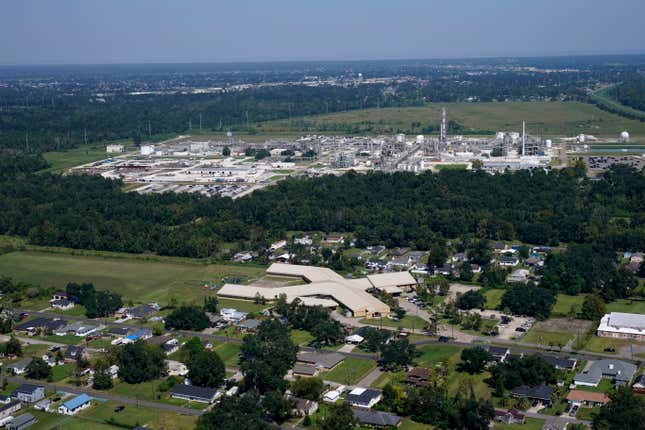
This month, the US Department of Justice filed a lawsuit against two petrochemical companies that may be the reason why St. John the Baptist Parish of Louisiana or “Cancer Alley” has the highest cancer risk in the entire nation, per The Guardian. Residents say the suit is too late, after being subject to poison pumped into their air and water for over 5 decades.
Dangerous Levels of Chemical Emissions
DuPont Products USA LLC constructed the Pontchartrain Works facility right beside the Black Louisiana neighborhood in the 1960s, the report says. They controlled its operations until 2015 when they sold the plant to a Japanese chemical company, Denka. A month later, the parish’s cancer risk skyrocket.
Denka produces synthetic rubber for things like wetsuits or laptop sleeves. However, the production of this material emitted chloroprene into the air - a “likely” human carcinogen being emitted at 14 times the recommended level for the surrounding neighborhood, according to the Department of Justice.
If that sounds brutal, consider the fact the plant has been releasing these toxins just 450 feet from the Fifth Ward Elementary school and a mile away from East St. John High School, per the DOJ. The suit says the emissions are so high in the area, that children under 18 breathing air anywhere near the facility’s fence would “exceed their lifetime excess cancer risk by two years.”
Failure to Stop the Poisoning
To address the concern, the company tried reduce emissions as requested by the Environmental Protection Agency several years ago. However, in 2020, the EPA found chloroprene levels around the elementary school were 8,300 percent higher than the recommended level, pet NBC. On the other hand, the EPA could’ve made an order to just shut down the plant altogether, according to a former deputy director of the EPA enforcement division.
“EPA could have immediately shut down, but they didn’t do that,” said Steve Gilrein to NBC News. “It’s unconscionable that it has taken this long. When the EPA suspected that this was a carcinogen, they should have acted with urgency.”
Though hopeful, the lawsuit comes far too late as parish residents have been diagnosed with various forms of cancer and watched their loved ones or neighbors die from the same illness.
Read more from NBC News:
The fond memories often give way to an intense sadness whenever Patrick Sanders thinks about the friends and neighbors he grew up with here on East 31st Street. So many of them have died of cancer that he said he has lost count. The disease also took the lives of his father and his sister, at the age of 44. Sanders himself is facing a recurrence of prostate cancer. He spent more than two decades on the district school board that oversees Fifth Ward Elementary, until he retired as president in December.
“There is a strong feeling of regret,” said Sanders, 56, who owns a funeral home. “We were making sure kids were educated, but we weren’t making sure kids were safe.”
Many of the families here live in homes that were built by their ancestors and passed down through generations. Mary Hampton, 83, said her father worked his whole life to buy a piece of land from which he gifted sections to each of his nine children. “He thought he was leaving us a legacy,” she said. “Actually, he left us a death sentence.”
On a recent Monday, Hampton sat in her front yard and pointed at several nearby ranch houses as she ticked off the family members and friends she has lost to cancer. Her son. Her brother. Her father. Her sister-in-law. Another brother, who lives next door to the one who died, has cancer too, she said. “We are like a bunch of guinea pigs over here,” she added.
St. John the Baptist Parish alone has been considered the place with the highest cancer risk in the country for the past decade. Their risk now is still seven times the nation average, per the EPA. Despite the direct connection between the chemical emissions and cancer diagnoses, Denka responded to the lawsuit and accusations of poisoning the neighborhood in complete denial.
“There is simply no evidence to suggest the company’s operations cause increased risk of health impacts in St. John the Baptist Parish,” a spokesperson said to NBC. In another statement, the company insisted they were in compliance with the air permits under Louisiana law.
Everyone has a human right to the basic needs of clean water and clean air. That is until capitalism takes priority over people’s well-being. Most of the time, Black communities bear the burden of the unethical practices of companies such as these.